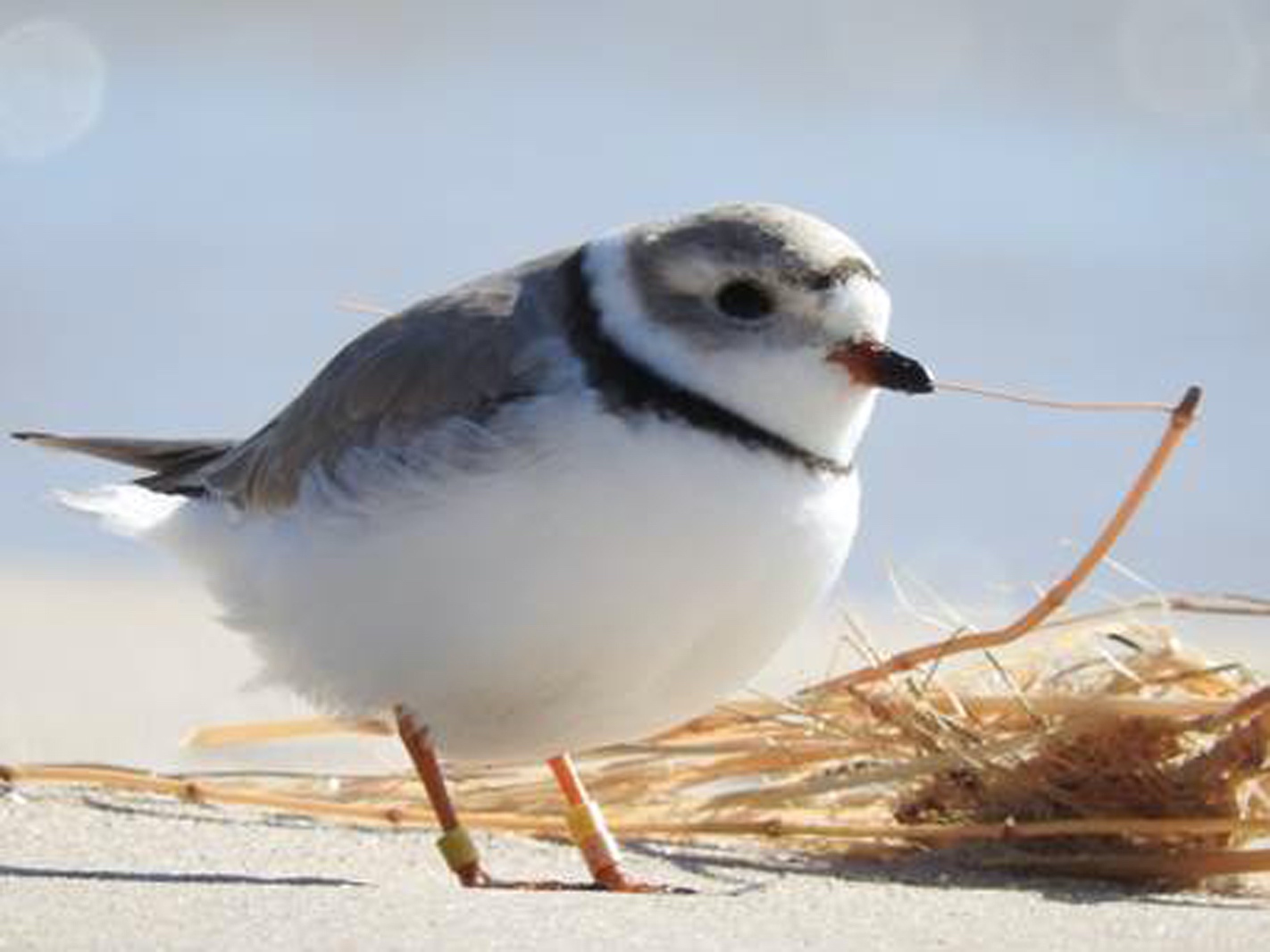
A Good Meal and a Place to Rest
The following post is from guest blogger Jill Henemyer. Jill is an avid birder and long time member and volunteer for the Land Conservancy of West Michigan.
***
Here in West Michigan we are privileged to live next to the Lake Michigan shoreline, an important link along the Great Lakes pathway for migrating birds. Because of its biologically rich coastal areas, the Great Lakes region is one of the top places in the world for bird migration. Many of the Land Conservancy’s preserves are within 15 miles of the shoreline,and offer critical stopover habitat for birds during migration. As spring migration is upon us once again, our preserves will soon be graced with the song and beauty of migrating birds. While some will stay and make their summer home here, others will utilize the preserves only for a short time to replenish depleted fat stores and get some rest before continuing their journey north.
Such is the case with this endangered Piping Plover that was observed feeding on the shore near the Flower Creek Dunes Preserve on April 22. A photo of the bird and its color-coded leg bands was sent to the folks at the Great Lakes Piping Plover Recovery Effort who were able to identify the bird and some of its story. This piping plover hatched at Silver Lake State Park in 2013, and nested the following years at Ludington State Park and on North Manitou Island. As there were only 75 known nesting pairs of Piping Plovers in the Great Lakes Region last year, it is indeed a special treat to have one of these birds visit one of our preserves!

Information on migrating birds is helpful in the development of conservation management plans and help us understand the relationship birds have with their habitats. You can get involved in this effort too, by getting out to the preserves this spring and documenting what you see. We’d like to encourage all of the birders among us to enter your findings on eBird, which is an amazing citizen science project for reporting bird observations. Best of all, the data that you (and millions like you) collect is accessible to anyone for free! (Here are the sightings from Kent County) It’s fun and easy to use. You can even download the eBird app for iPhone or the Birdlog app for Android.
What does this mean for our preserves? Our preserves are likely hosts for state-threatened or species of concern (as evidenced by this Piping Plover), as well as a growing list of more common birds whose populations are in steep decline.

Documenting your bird sightings on eBird is helpful because it:
- Contributes to our database of what we know about our preserves.
- Provides information about bird distribution at our preserves.
- Provides information about migratory pathways and how birds are utilizing the preserves during migration.
- Provides information about bird population trends in the preserves.
- Provides information about landscape use in terms of food, water and shelter sources.
- Provides continual on-going monitoring of bird populations in the preserves.
So what are you waiting for? Grab your binoculars, get out to the preserves and go see some birds!




